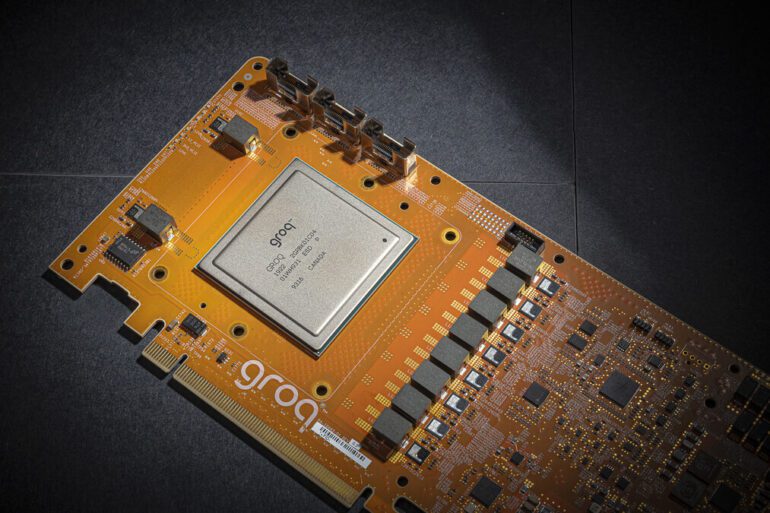TL;DR:
- Groq LPU is an AI chip designed for inference tasks, offering exceptional speed and efficiency.
- Utilizing the Tensor-Streaming Processor (TSP) architecture, it achieves impressive throughput rates of 750 TOPS at INT8 and 188 TeraFLOPS at FP16.
- With 320×320 fused dot product matrix multiplication and 5,120 Vector ALUs, the Groq LPU delivers unparalleled performance.
- Recent benchmarks demonstrate its ability to outperform competitors in serving large language models with impressive token throughput and low latency.
- Groq LPU poses a significant threat to established players like NVIDIA, AMD, and Intel in the inferencing hardware market.
Main AI News:
In the realm of artificial intelligence, workloads are typically categorized into two distinct areas: training and inference. While training demands significant computing power and memory capacity, the speed of access isn’t usually a critical factor. However, when it comes to inference, speed is paramount. Inference tasks require AI models to deliver rapid responses to user prompts, processing as many tokens (words) as possible in the shortest time frame. This demand for speed has fueled intense competition among hardware manufacturers to develop chips optimized for inference tasks.
Enter Groq, a previously stealth-mode AI chip startup, is now making waves in the industry with its revolutionary Groq LPU (Language Processing Unit). Engineered specifically for large language models (LLMs) such as GPT, Llama, and Mistral LLMs, the Groq LPU boasts unparalleled speed and efficiency in inference processing. At the heart of its performance lies the innovative Tensor-Streaming Processor (TSP) architecture, enabling the Groq LPU to achieve remarkable throughput rates.
With an impressive throughput of 750 TOPS at INT8 and 188 TeraFLOPS at FP16, coupled with 320×320 fused dot product matrix multiplication and 5,120 Vector ALUs, the Groq LPU delivers exceptional performance. Moreover, its massive concurrency, boasting 80 TB/s of bandwidth and 230 MB of local SRAM capacity, ensures seamless operation even with demanding workloads.
Recent benchmarks have showcased the Groq LPU’s prowess, particularly in serving large language models. For instance, it can handle the Mixtral 8x7B model at a remarkable rate of 480 tokens per second, outperforming many competitors in the industry. Even with more complex models like Llama 2 70B, which feature a context length of 4096 tokens, the Groq LPU maintains impressive throughput, delivering 300 tokens/s. In smaller-scale configurations, such as Llama 2 7B with 2048 tokens of context, the Groq LPU achieves an outstanding output of 750 tokens/s.
Notably, the Groq LPU has garnered attention for its superior performance compared to GPU-based solutions offered by cloud providers. According to the LLMPerf Leaderboard, Groq’s chip consistently outperforms competitors across various configurations, boasting the highest token throughput and second lowest latency.
To contextualize these achievements, consider that traditional models like ChatGPT, running on the free version with GPT-3.5, can output approximately 40 tokens/s. However, with advancements in open-source LLMs like Mixtral 8x7B, which can now achieve nearly 500 tokens/s, the landscape of AI inference is rapidly evolving.
Conclusion:
As the era of slow chatbots fades into obscurity, the rise of fast inference chips like Groq’s LPU signals a significant shift in the industry. With its remarkable performance capabilities, Groq poses a direct threat to established players such as NVIDIA, AMD, and Intel in the inferencing hardware market. While questions remain regarding widespread adoption, there’s no denying the tangible benefits that Groq’s LPU brings to the table. In the competitive landscape of AI hardware, Groq has firmly established itself as a force to be reckoned with.

